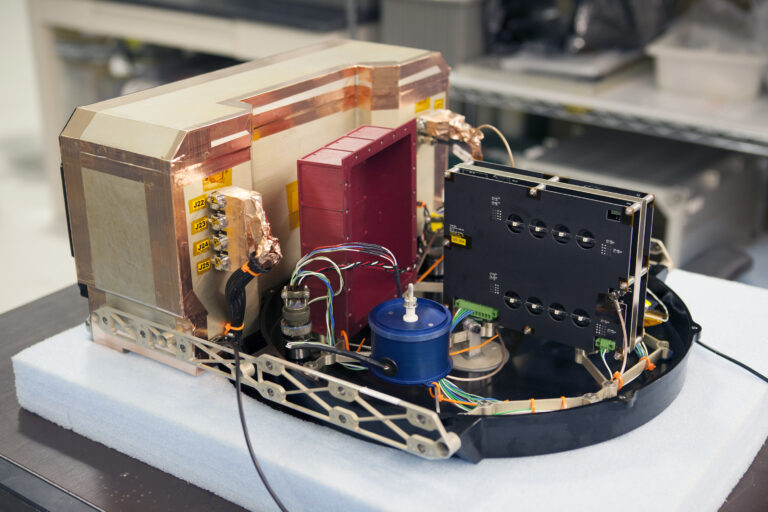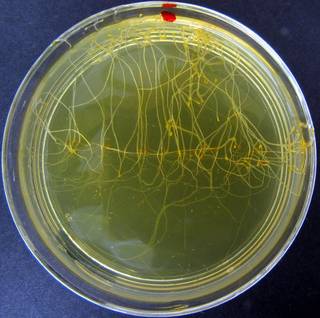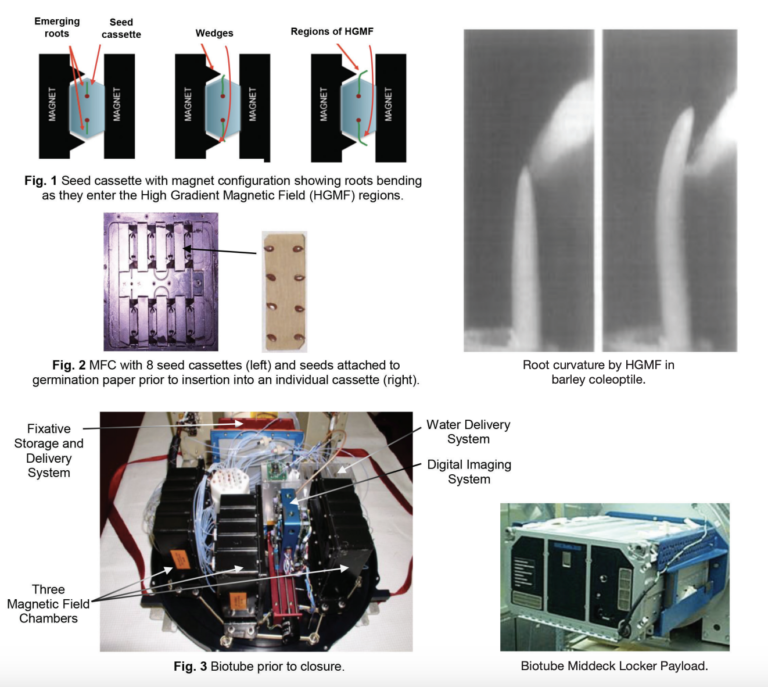Biotube
Spaceflight Research Tool

- Full Name: Biotube
- A.K.A: Biotube/Magnetic Field Apparatus (MFA), MFA-Biotube
- Affiliation: NASA
- Country: United States
- Focus Areas: Magnetic Fields, Gravitropism
- Type: Spaceflight
- Lead: Karl H Hasenstein
- Spacecraft: Columbia (STS-107)
- In Service: 2003
- Confirmed Plants Grown:
- Flax (Linum usitatissimum)
- Key Features:
- 3 Magnetic Field Chambers (featuring wedges magnetized by permanent NdFeB magnets (coercivity > 32k Oe))
- Digital Imaging System
- Water Delivery System
- Fixative Storage and Delivery System
Summary
Unlike other more “general-purpose” space plant habitats, Biotube was developed with a specific experiment in mind.
Biotube was developed to see if magnetic fields could orient plant roots as they grow in microgravity. Since plant roots cannot tell what direction is up or down in microgravity, they tend to skew or grow all over the place. Essentially, NASA wanted to see if they could use a magnetic field to get the roots to grow in the direction of said magnetic field. The name for this experiment was “Magnetophoretic Induction of Curvature in ROots” or “MICRO”.

Biotube featured 3 Magnetic Field Chambers- 2 of the Magnetic Field Chambers were used to grow Flax seed roots across a High Gradient Magnetic Field. The other Magnetic Field Chamber provided a uniform non-gradient field as a control comparison. The software in Biotube automatically delivered water to the seeds, took images of the growing roots, and preserved the roots with a chemical fixative for later analysis. The entire experiment lasted less than 48 hours.
Unfortunately, STS-107 was the mission in which the Columbia space shuttle disaster occurred. This tragedy destroyed all of the plant material and most of the images generated for this experiment. Nevertheless, Primary Investigator Karl H. Hasenstein published a paper on the experiment using what data they did have. The paper (Hasenstein et al., 2005) suggests that roots grown in microgravity have a higher sensitivity for High Gradient Magnetic Fields than ground control roots, which might be due to an increase in pronounced intracellular motion.

